While Lebanon sits comfortably on the eastern edge of the Mediterranean Sea, with snow-capped mountain ranges running through the heart of the country, Jordan on the other hand is a mostly arid land with the vast Arabian desert occupying up to 75% of the kingdom’s total area. The peoples of the Levant (a region that is now Syria, Lebanon, Jordan, Israel and Palestine) share a lot of similar cuisines, but different geographical conditions like this play a huge role in creating variations of dishes from one country to the other.
You might remember Bethany from my previous post, a cookbook author and an expert on Lebanese cuisine who was also our guide in exploring Beirut’s diverse culinary scene, who told us that the za’atar in Jordan is even better than the kind made in Lebanon. That was among the reasons why James and I decided to go to this Middle Eastern kingdom just six months after our first visit to this part of the world. However, for our first meal in Amman, we opted for falafel and hummus instead, both of which are among the most well-known Levantine dishes that can be found across the globe. From our hotel in the eastern part of the Jordanian capital, we walked to Hashem, probably the most famous place in town for locals and tourists alike to enjoy these fried chickpea balls. The restaurant was packed when we arrived, but fortunately we managed to get a table as a group of people had just finished their lunch not long after we came. Without a menu or anything written on the wall, we had to ask the waiter who then mentioned a few dishes to which we said yes. In just a few minutes the falafel came, followed by moutabal (roasted aubergine mixed with tahini, olive oil and sometimes yogurt) and some pita bread. This satisfying lunch was a sweet reminder of the good times we had in Lebanon exploring its culinary offerings. But when we thought Jordanian food was very similar to that of Lebanon, we couldn’t be more wrong.
Another famous falafel place in Amman is called Al Quds. But there’s a second Al Quds where you can sample a wide variety of Jordanian and Palestinian dishes, and it was at the latter where we were truly introduced to specialties that are uniquely Jordanian. Al Quds itself is the Arabic name for Jerusalem, a city that is at the heart of a lot of animosities among neighbors in this region. Many Palestinians who once lived in the West Bank (at one point was administered by Jordan, then occupied by Israel, before being granted self-rule under the Palestinian Authority, although in reality many parts of it are still under Israeli control) fled their homes, seeking refuge across the Jordan River and resettling in the kingdom. And as in every refugee story across the globe, these people also brought their culinary traditions with them to their new home, which is why it’s quite easy to find Palestinian food in Jordan.
We visited Al Quds multiple times during our four-day stay in Amman to try as many dishes as we could. First we had mansaf. Widely considered to be the national dish of Jordan, it describes fork-tender lamb cooked in jameed (a hard dry goat’s milk yogurt) served with rice. I’m not always a fan of savory dishes with yogurt, for the sourness of the latter can sometimes overwhelm other flavors. However, I was pleasantly surprised to find out that this was not the case with jameed. The lamb was tender and succulent, and the jameed sauce that came with the dish added a nice layer of subtle saltiness and richness to it. Then we also had fattet hummus, a Jordanian twist on the popular dish/dip/spread that can be found throughout the Middle East. In addition to its basic components – mashed chickpeas blended with tahini, lemon juice and garlic – there’s also bread that has been completely soaked in broth before being mixed with the other ingredients. The version we had, however, had some extra toppings – meat and pine nuts – which made the dish even more satisfying. We also tried musakhan. Consisting of roasted chicken with caramelized onion, pine nuts, sumac and other spices served over taboon bread, it’s considered to be the national dish of Palestine.
For the vegetables, we tried the restaurant’s version of tabbouleh (which was less sour than what we had in Lebanon), as well as Arabic salad, a light and refreshing dish made of diced cucumbers and tomatoes, mixed with parsley and onion, then drizzled with lemon juice, salt and olive oil. For dessert we tried knafeh, thin noodle-like pastry or fine semolina dough that is soaked in sweet syrup then layered over cheese and topped with crushed pistachio. The sweet and salty combination was so indulgent I wished I could have another serving had my stomach not been so full. Coming to Jordan just a few months after our trip to Lebanon, where we had so much good food, I tried not to set my expectations too high for Jordanian cuisine. But I was blown away by the flavors I’d had so far, and all these delicious delicacies were just a few minutes’ walk from our hotel!
One morning in Amman before we left for a half-day excursion out of the Jordanian capital, we opted to get our breakfast on the go, instead of conveniently enjoying what our hotel provided. Since the day of our arrival in the city, we had been eyeing this particular small shop that serves a wide variety of bread, including manakish, located on the same side of the street as our hotel. So this time we decided to go there. Fortunately, it was already open while other shops were still closed. We placed our orders, got our breakfast in no time, and returned to the hotel since the bread joint had no place to sit. Inside our room we carefully unwrapped the piping hot manakish and took a bite. After a brief moment of solitude while savoring our very first taste of Jordanian za’atar, we looked at each other and nodded in agreement. Bethany was right. This was definitely more nutty and rich than the Lebanese version of the dried and toasted herb mix, and it went perfectly well with the warm flatbread.
On our penultimate night in Amman, we went to a different place which was harder to find. Shahrazad is the name of the restaurant, and we made sure to check its location on Google Maps before leaving our hotel. However, when we were at where it was supposed to be, we didn’t see any sign of it. We walked around to see if we had missed any hints, and it suddenly crossed my mind that maybe this place doesn’t have an English signboard. With my very limited Arabic, I tried to read those curvy Arabic letters around us and tried to pick up one that sounded like the name of the restaurant. After a while, we stumbled upon a narrow alley. From afar I looked at one particular signboard and tried to decipher the letters: sh-h-r-z-d. Perhaps we had finally found it! We came closer, secured a table, looked at the menu, and pointed out a dish called arayes to the server. We also ordered shish kebab out of curiosity to how this place does the ubiquitous skewered grilled meat dish. Less than 10 minutes later, our dinner arrived. The pita bread of the arayes was nice and crispy, and the lamb filling was well-seasoned. However, it was only long after that trip to Jordan that I learned the true origin of this dish: it’s actually from Lebanon. This shouldn’t come as a surprise, though, as Levantines dishes have always been traveling around this part of the world, evolving as dictated by the availability of ingredients in each locality, and being reintroduced and reinvented over and over again.
The Jordanian food scene had been amazing so far, exceeding my own expectations especially after traveling to Lebanon. However, we couldn’t leave Amman without dining at Sufra, which is a well-known culinary institution in the city for good reason. Situated in a quiet neighborhood in West Amman – the Jordanian capital’s other side that is modern, sleek and sophisticated as opposed to the east’s more historic, chaotic and down-to-earth feel – the restaurant occupies an old villa that had been turned into an upscale venue hidden from plain sight by blooming bougainvilleas and other flowers during our visit. We were seated next to a window, then perused the menu before deciding which dishes we wanted to try. First was Jerashi labneh, a variety of labneh (strained yogurt) originating from Jerash in northern Jordan drizzled with olive oil, sesame seeds and served with chopped green peppers. Then, this was followed by gallayeh/galayet, a dish made from boiled and pureed tomatoes mixed with olive oil, salt and onions – the version we had came with a hot pepper. Next up was mnazalet beitinjan which is stewed eggplants in casserole, and lastly fattet magadem – essentially fattet with lamb trotters (magadem). This feast of Jordanian regional dishes was a further affirmation of how good the food in this country really is, and the Lebanese patrons seated behind us seemed to have the same opinion.
Our culinary exploration in the kingdom continued in Wadi Musa, a small town that serves as the main gateway to Petra, the spectacular rock-carved ancient city that is probably among the most awe-inspiring places on the planet. For our first lunch in this relatively desolate part of Jordan, we had maklouba. Literally meaning “upside down”, this dish is cooked in a pot where meat or chicken and vegetables are placed at the bottom, then topped with rice. It is then flipped upside down when served on a plate, hence its name. We went to a touristy restaurant at the center of town to try it, but surprisingly it was quite tasty as opposed to how food usually is at most places whose customers are primarily non-local visitors. Further south in Wadi Rum, the very last place in Jordan we visited in October last year, we were introduced to zarb, a Bedouin delight of meat, potatoes, and mixed vegetables cooked in an underground oven. Watching how the staff members of our campsite dug up our dinner was as interesting as tasting the meal itself. This made me curious about how other foods prepared in a similar way in many parts of the world tasted in comparison.
At the end of our week-long trip to this fascinating, mostly-arid country situated at the crossroads of many ancient trade routes, not only were our taste buds and stomachs consistently happy, but we were also pleased to know that the Levant once again showed us that it not only has impressive heritage sites, but also a great culinary scene. Shortly before boarding our flight at Queen Alia International Airport, we got ourselves a bag of za’atar to bring home to Jakarta so that we could at least enjoy a bit of Jordanian flavors at home. And as if the universe knew how much we loved the food in this kingdom, on our flight to Doha (where we would connect onward to the Indonesian capital) we were surprised to find out what we got for lunch instead of the standard in-flight meal options: maklouba. We took a spoonful of this rice dish, quietly finished it in no time, and at the end we both said to each other, “that was a really good maklouba.” It’s among the most satisfying airplane meals I’ve ever had, really. Oh Jordan, what a delicious destination you have been!
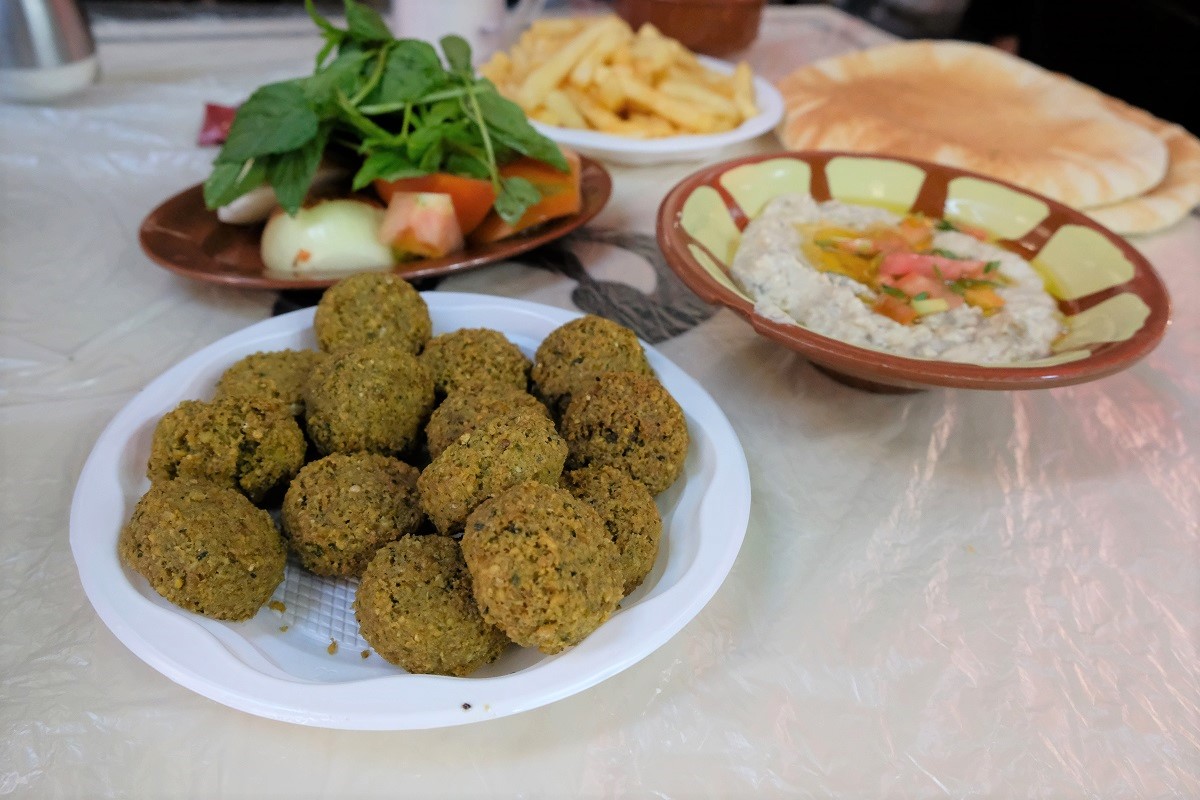
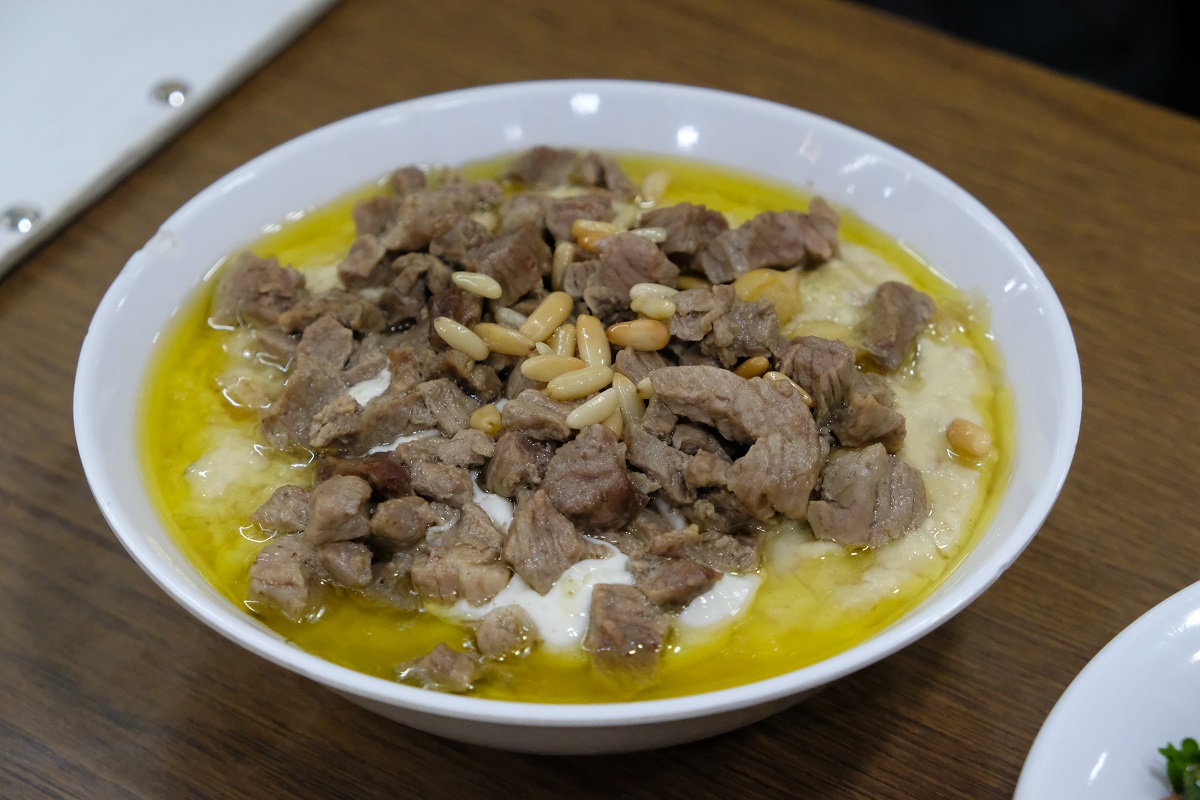
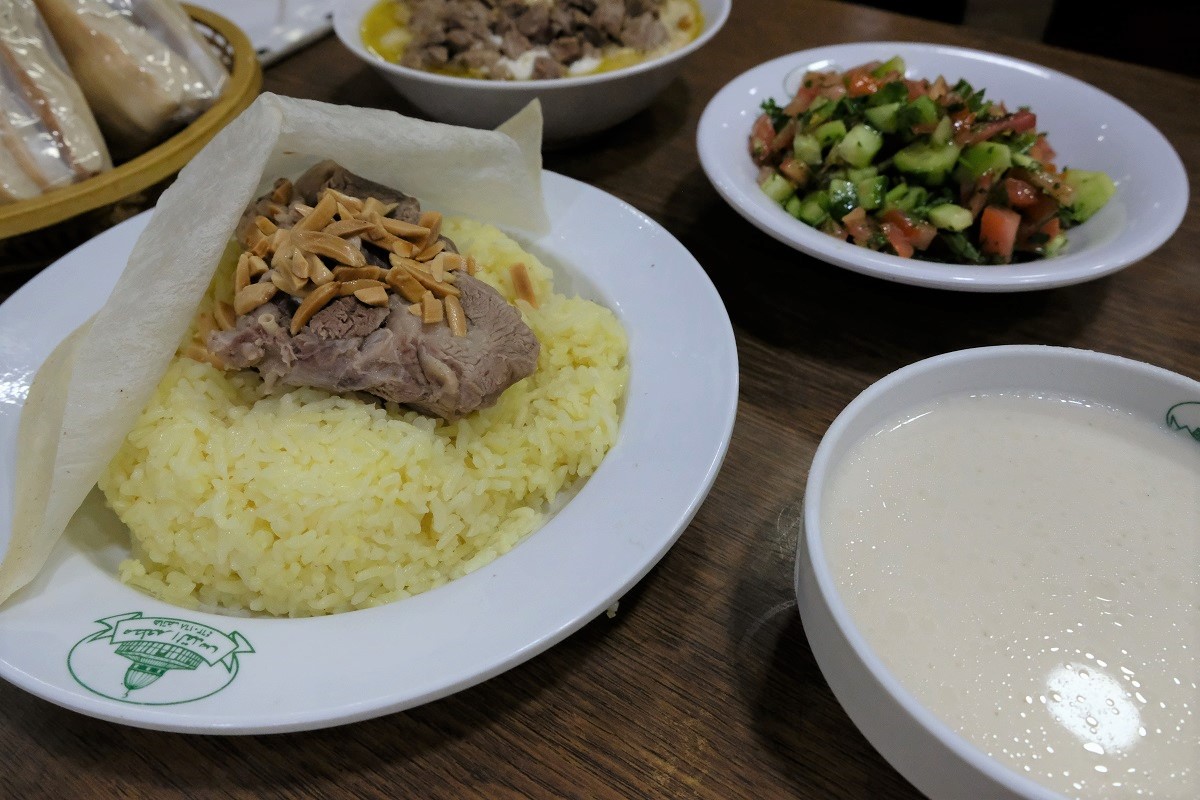


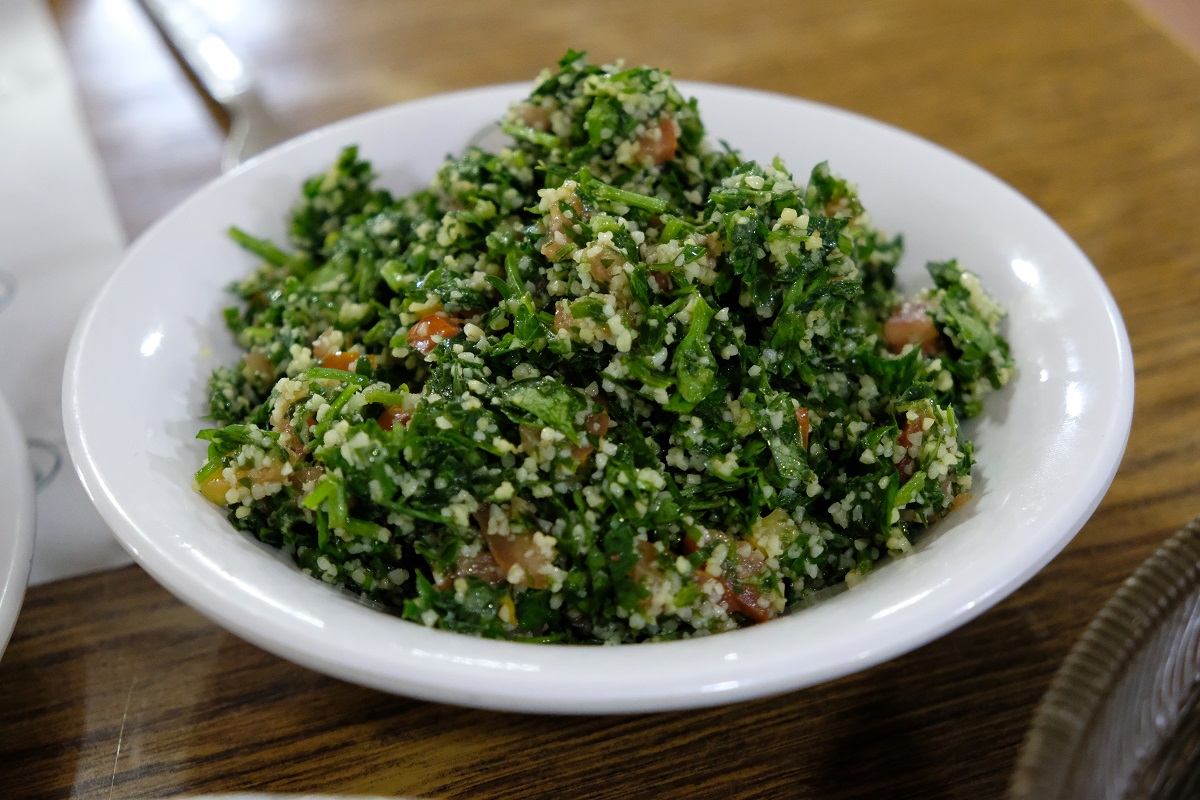
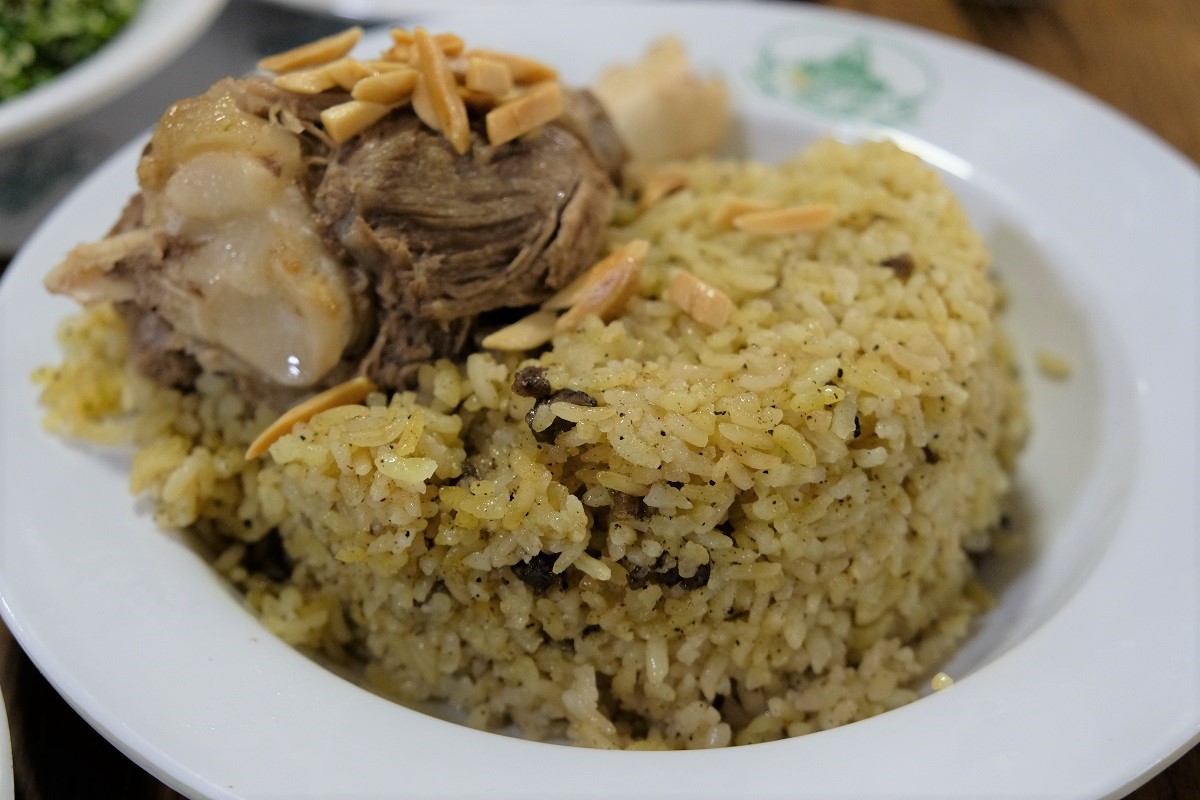
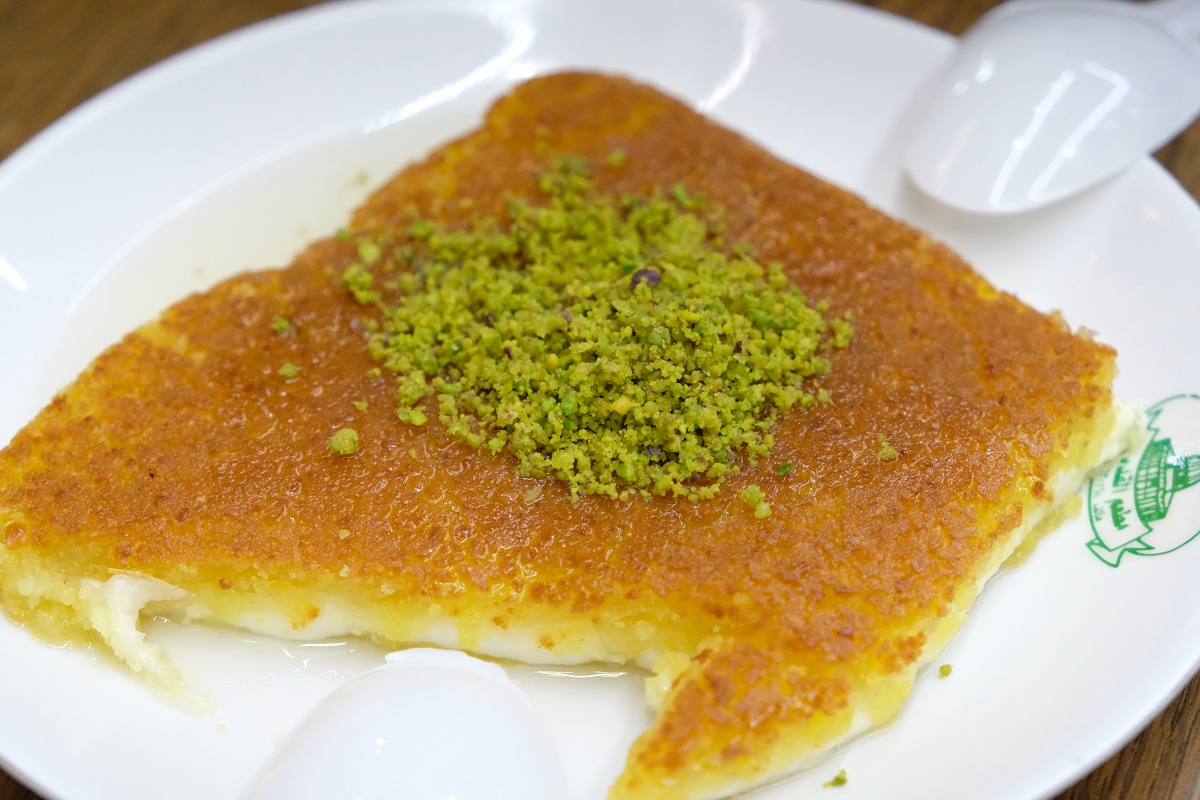
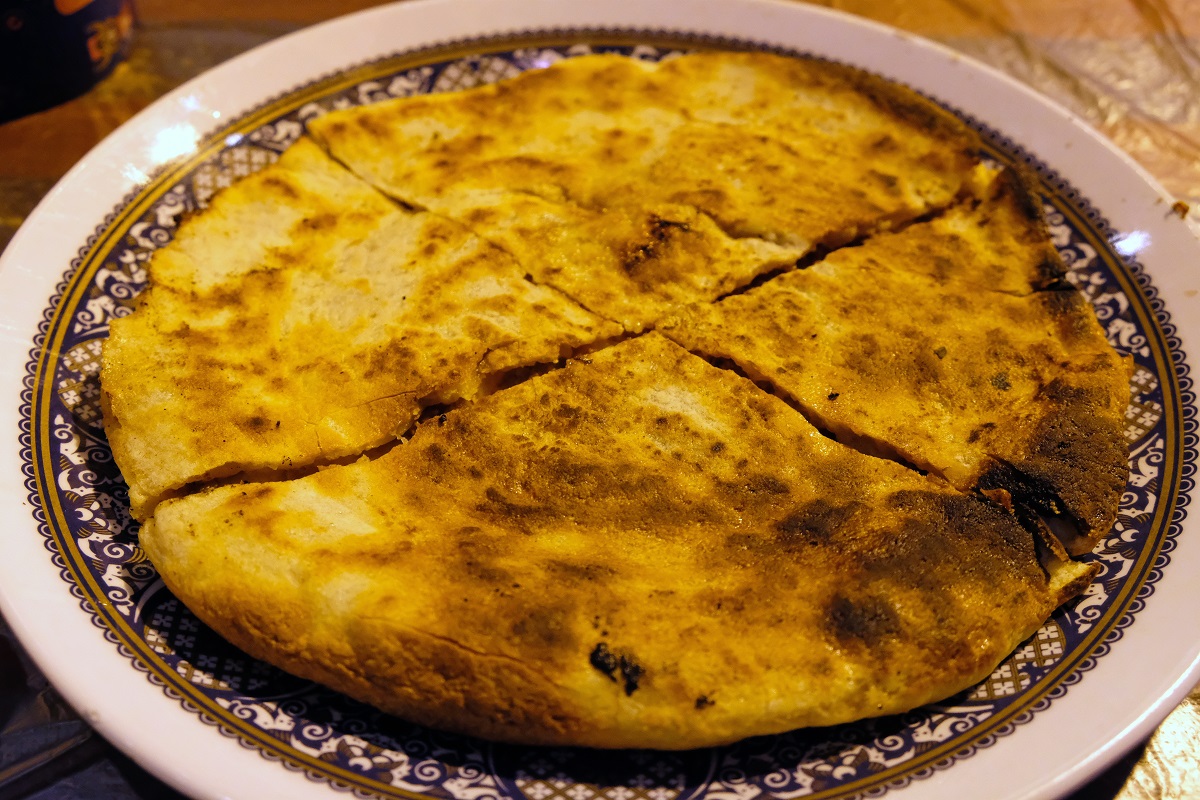
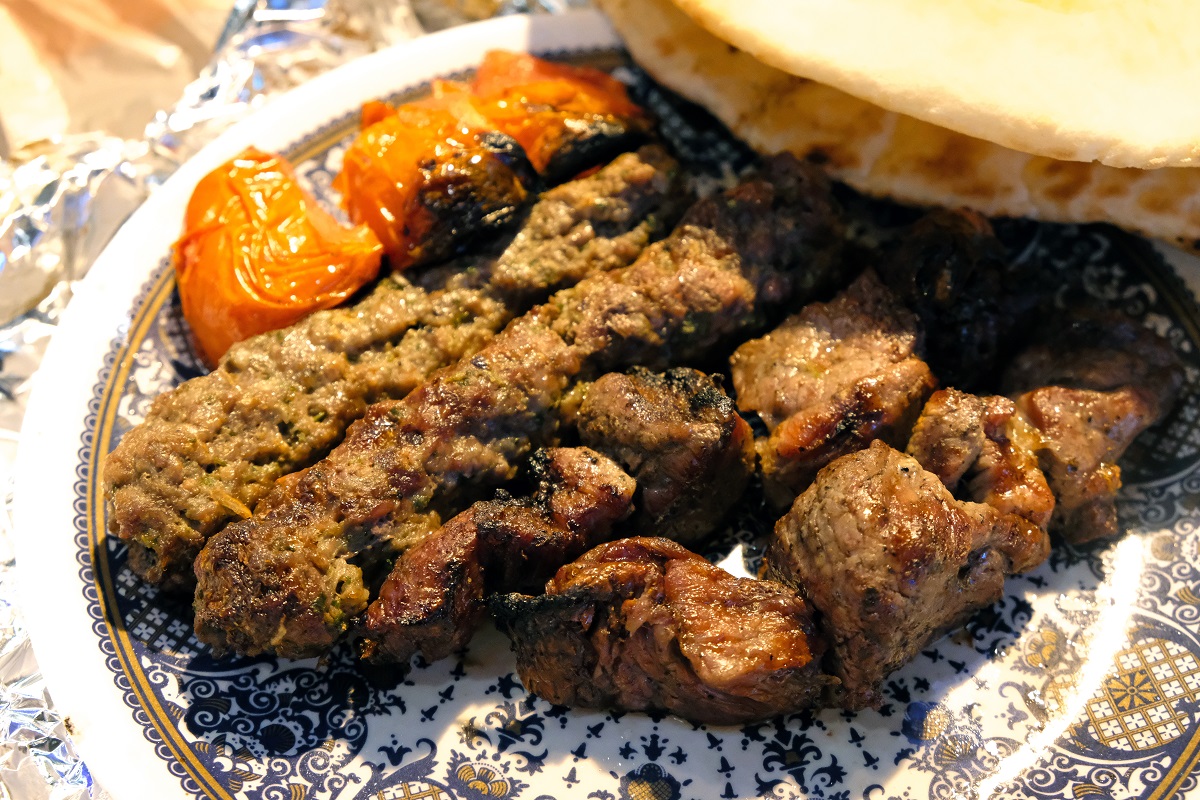
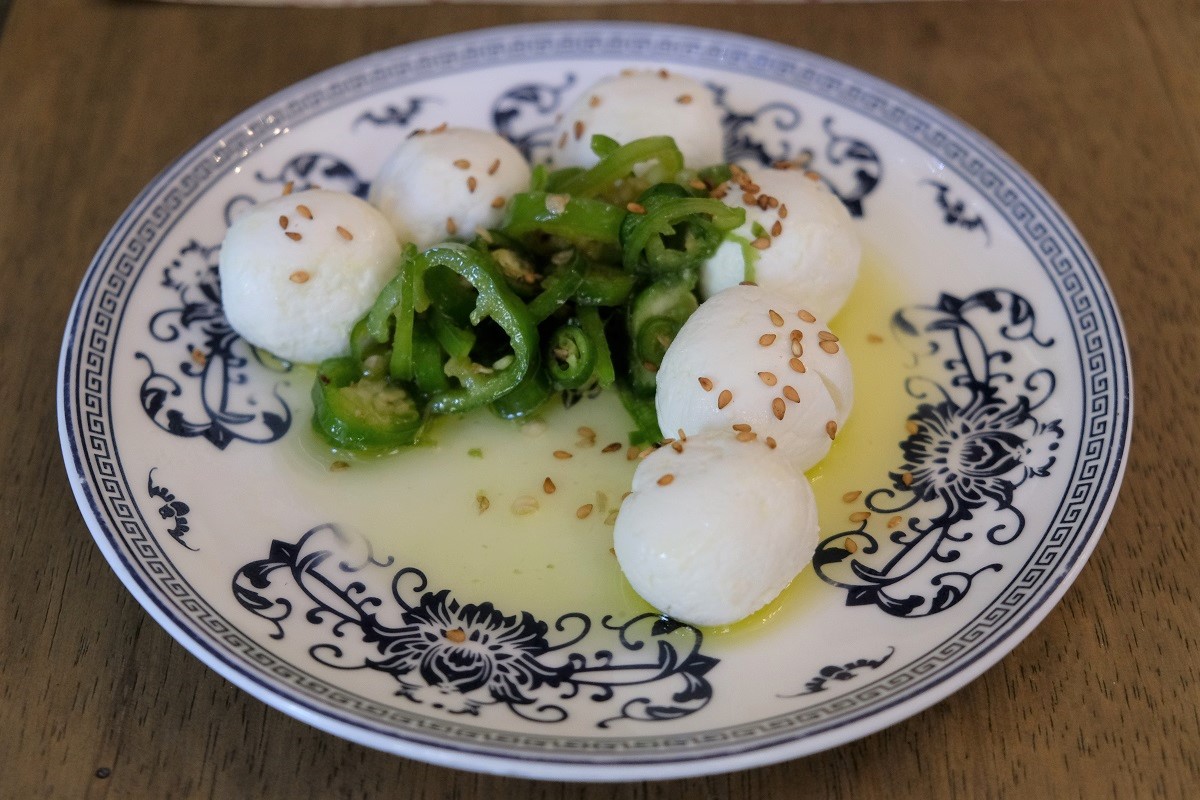
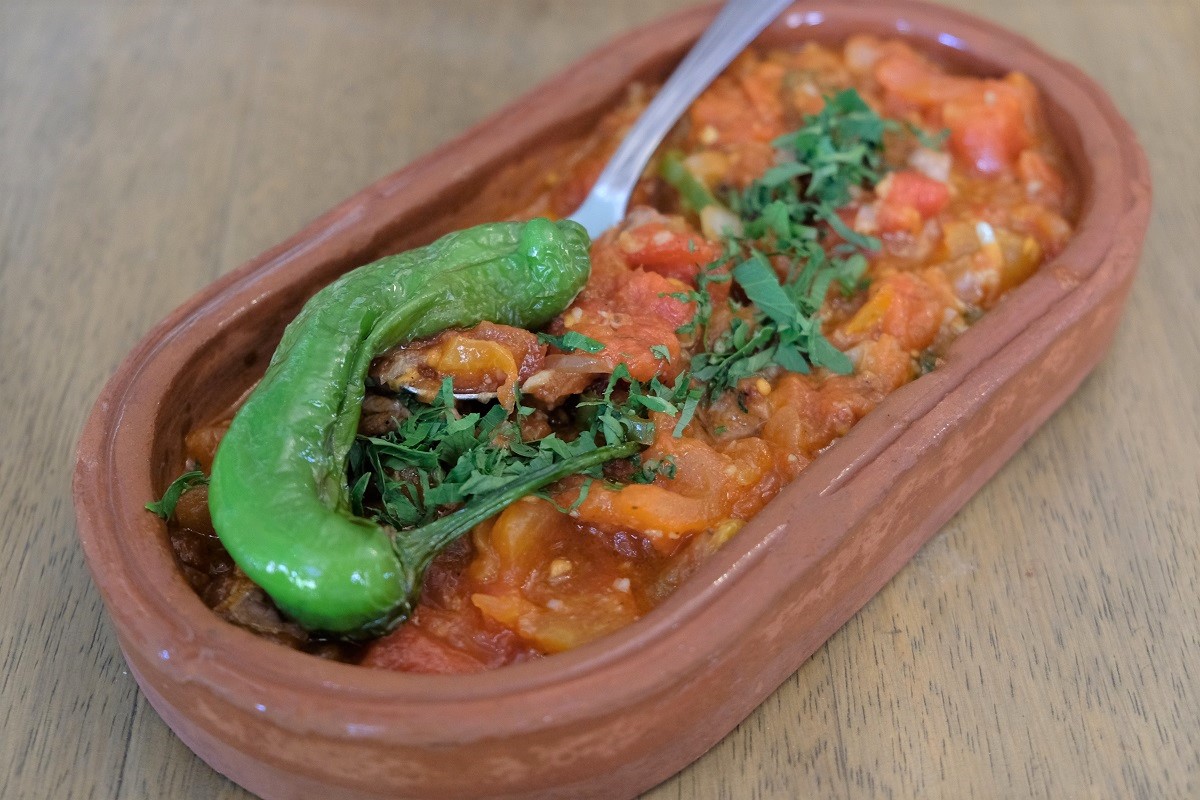
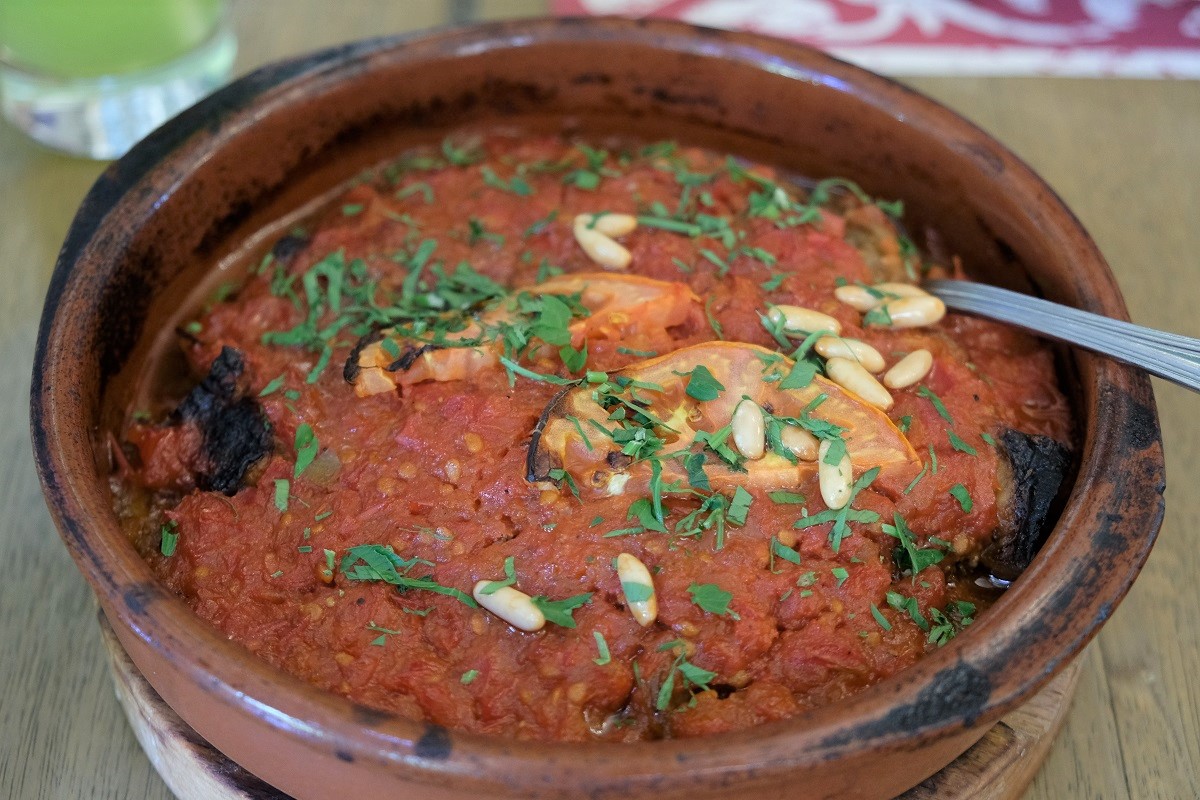


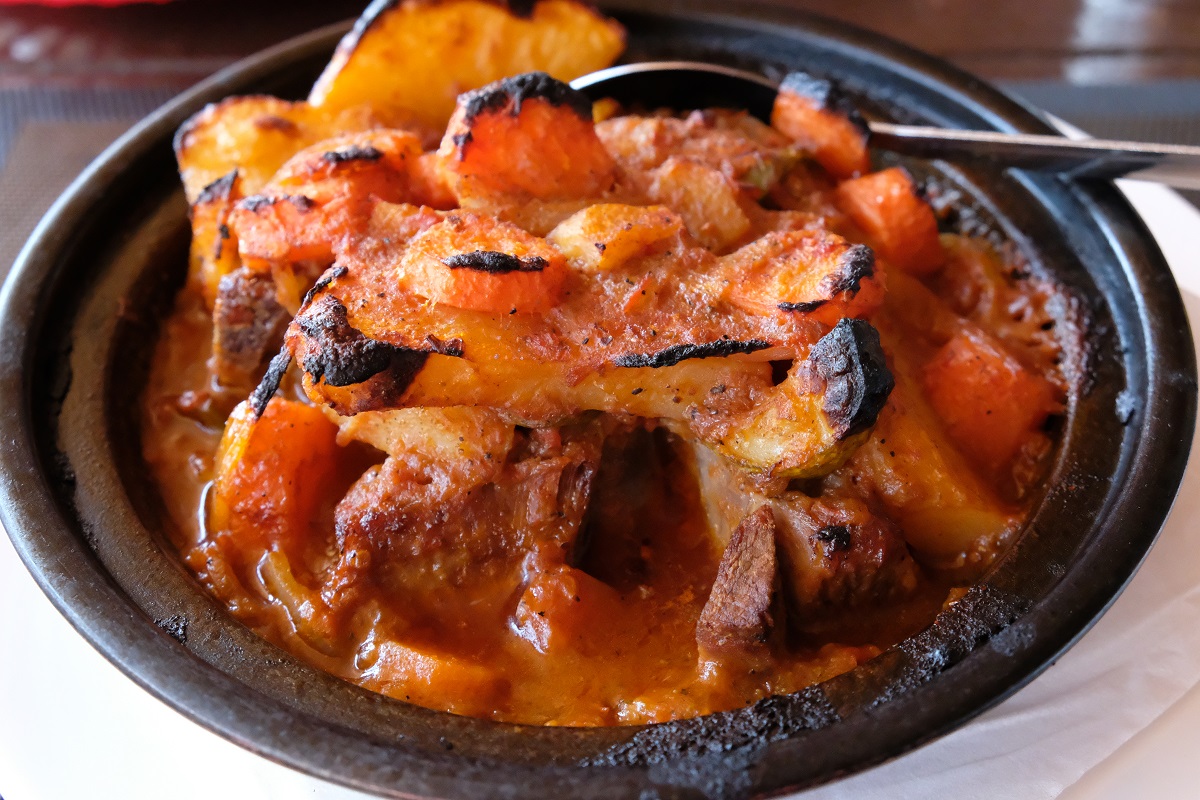

Yum, these photos are making me hungry! Food is such an important part of travel, I love discovering a new place through its food. Thanks for sharing 🙂
LikeLiked by 1 person
I couldn’t agree more; food really is a window to a culture, and when people of that culture travel, they will almost certainly bring elements of their foods as well as their cooking technique to the new place. I wish I had realized this in my early years of traveling. This only means I have to go back to some of those places, including Cambodia — where I ate mostly things I was already familiar with.
LikeLiked by 1 person
We so enjoyed the food in Jordan. I’m not much of a foodie and sadly paid little attention to names of dishes. Thanks for the culinary tour. Delicious!
LikeLiked by 1 person
Ahh yes, I remember that time when you, Nicole and I were literally days apart in Jordan. That felt a long time ago, especially since just a few months after that the world was suddenly shut to international travel.
LikeLiked by 1 person
Oh man I have been thinking about Jordanian food lately! I would do anything to go to Hashem right now! Your post has got me drooling! Lol
LikeLiked by 1 person
Is there a decent Jordanian restaurant where you live? I’m lucky to have finally found one here in Jakarta. It’s run by a Jordanian and his Iraqi business partner. The dishes I had tasted very much similar with what I had in Jordan.
LikeLike
We have no such thing here sadly…. Not that I know of anyway. Most middle eastern places here in Perth are usually just kebab shops! You are lucky to get something close to resembling Jordanian cuisine there!
LikeLiked by 1 person
Oh I wasn’t aware that you live in Perth. I’ve been thinking of going there the next time I come to Australia — and Perth is a lot closer to Jakarta than other cities down under.
LikeLike
Yes I’m a Perth chick born and raised! If you do come down let me know, I’ll shout you a drink! 🙂
LikeLiked by 1 person
Will do, Anna! 🙂
LikeLike
Amazing and very varied dishes. Never heard of most of them. They all look great.
LikeLiked by 1 person
Unfortunately, Jordanian food doesn’t travel well — although on the other flip of the coin this means not many Jordanians have to flee their home country and resettle in faraway lands.
LikeLike
Yum! I’m going to see if I can find some za’zar
LikeLiked by 1 person
If you’re still in Melbourne, I’m sure you’ll be able to find it given the significant number of Lebanese diaspora in the city.
LikeLiked by 1 person
I’m back in Canada since February, but I have a place in mind where I might find it
LikeLiked by 1 person
I’ve had the tendency to lump cuisine from this region into one category so it’s a good reminder for me to read your interesting account of the variation in dishes between countries and dishes that are unique to a place. A usual, your descriptions and food photos make my mouth water.
If you don’t already own the cookbook Jerusalem you might consider buying it. It’s a beautiful collaboration by co-authors (both from Jerusalem—a Palestinian and a Jew). Not only are the recipes divine, the photography is gorgeous (think coffee-table book) and the introduction and recipe backgrounds are full of fascinating stories—they remind me a bit of how you and James write about food.
LikeLiked by 2 people
We all tend to do that one way or another, especially if we’re not too familiar with that region. Even we Indonesians tend to categorize dishes in the country into groups despite the wide varieties of flavors and ingredients one can find on each island.
I wonder if I’ve actually seen that book at a book store, because your description doesn’t sound too unfamiliar. I think James’ true calling is to write books on foods — I won’t be surprised when that happens one day in the future.
LikeLike
Loved your photos, Bama! Do you research prior to arriving to a place, or do you go where local people seem to be going to?
LikeLiked by 1 person
Actually I do both — a little research prior to a trip gives me an idea of where to go on my first day there. But along the way I also try some random places, or ask the locals.
LikeLiked by 1 person
Bama, we spent a few days in Amman after our Petra visit, and I’m not entirely sure, but from your pictures and descriptions I believe we also ate at Hashem. It was just down the street from our hotel, and in fact, we enjoyed it so much we ate there twice. In addition to the delicious and cheap food, we knew it was the right choice because of the crowds and the variety of people there: from tie-wearing business people to workman off the street. Anytime we have falafel, we remember this place. ~James
LikeLiked by 1 person
It’s always a good sign if you see tourists and locals (from all walks of life) dine at the same place — there must be something special about the food. Did you find it difficult to order since there’s no written menu?
LikeLiked by 1 person
Bama, I don’t remember too much of a problem. We learned a bit of Arabic when we lived in Sudan, so we know a few words. ~
LikeLiked by 1 person
Ahh yes, I forgot about that. I read some positive news about Sudan lately. Hopefully one day I’ll be able to get there and retrace some of your steps.
LikeLiked by 1 person
I love how deeply you dive into the culinary scenes of the places you visit! I am such a basic eater, and being largely vegetarian means I try less than half of any new cuisine. Very interesting to read about the geographic origins of the food also!
LikeLiked by 1 person
When you do come to Indonesia one day, you won’t find it hard to try a lot of local dishes as many of them are vegetarian-friendly — hopefully you’re not allergic to peanuts though.
LikeLike
I am salivating at the moment, Bama, despite the fact that I’m a vegetarian, and most of the dishes you are refering too are meat based. Your memories and descriptions were expressed so well! I love Levantine food, as it has a base of wonderful vegetarian flavours. I take it for granted as I’m surrounded by it, but I suspect I will miss it when moving to Portugal soon. At least I have some recipe books for when I miss the flavours.
LikeLiked by 1 person
Yes, that’s true. Levantine culinary tradition has definitely contributed a lot to some of the most popular vegetarian dishes today. Chickpeas, eggplants, beetroots as well as what people make out of those ingredients — from tahini to hummus and falafel — are often found in fusion food.
How is your preparation to move to Portugal so far? I hope you’ll be able to sort things out in spite of these uncertain times we’re living today.
LikeLike
I’ll be buying my one-way ticket this weekend for flying out early October, Bama. I have an appointment with the immigration authority for my residence visa end of November, so fingers crossed that it will go smoothly. New adventures are waiting.
LikeLiked by 1 person
Wow, so exciting! Good luck for everything, Jolandi.
LikeLike
Mas Bamaaaaa…..
Berbeda dengan rencana, saya sudah sarapan pas baca postingan mas Bama ini… Nah, benar kan apa yang terjadi…. rasanya mendadak lapar lagi… langsung teringat makanan di Jordan itu, aduuh jadi kangen banget… muncul di lidah rasa yang dulu saya rasa di Jordan dan pastinya yang dirasakan Mas Bama and Mas James ini jauh lebih enaaaaaakkk…
By the way, di Jakarta restoran Jordan ada dimana ya? 😀 😀 😀
LikeLiked by 1 person
Hahahaha, gak ngaruh ya mbak. Bacanya mau dalam keadaan perut kosong atau sudah terisi, ujung-ujungnya tetep lapar. Mbak Riyanti coba ke Joody Kebab deh, di daerah Kelapa Gading. Suasana restoran dan rasa masakannya bener-bener mendekati apa yang saya cobain di Jordan dan Lebanon tahun kemarin.
LikeLike
A delicious opening photo, Bama, a perfect appetizer to this post 🙂 I’ve told you before how much I would like to visit Jordan, and this post is just another tease for me to find a way to go there once some normality returns to the world. While I’d go there to bath in the history and sights of the place, I think if I go there just to experience all the different dishes it would be perhaps the best introduction into the culture and people ~ you do such a great job of bringing all this together. The Sufra’s gallayeh looks especially tempting. Wishing you well, and take care as we enter the autumn season.
LikeLiked by 1 person
Thanks Randall! You will surely enjoy the culinary scene in Jordan for it is a great window not only to the country’s long history, but also to the geopolitical realities in this part of the world. Oh and everything tastes good too! It’s really good to hear from you again, and I hope everything goes well with you as we are all waiting for the world to reopen for international travel. Meanwhile, here in Jakarta we’re entering the rainy season a lot earlier than last year.
LikeLike
I’m so glad I read this on a full stomach, Bama – all those close-up shots of the many delicious things we ate in Jordan would have left me salivating otherwise! Even now, it is tough to pick a favorite between the mansaf at Al Quds, Sufra’s mnazalet beitinjan, and of course the hearty zarb we enjoyed both nights at the camp in Wadi Rum. We were so, so incredibly lucky to have gone to Jordan just a few months before the global travel shutdown. I’m definitely looking forward to revisiting the Levant or another part of the Middle East when it’s safe to do so again!
LikeLiked by 1 person
Ahh mansaf! That’s one dish I didn’t expect to be that good. Too bad that one Jordanian restaurant in Jakarta doesn’t have it. After our trips to Lebanon and Jordan, I’ve been thinking of returning to this part of the world to sample more traditional food from the region, and of course to see those millennia-old heritage sites. Sometime in the near future, hopefully!
LikeLiked by 1 person
Pingback: Exploring the World, Pandemic Style | What an Amazing World!
Bama, it appears that we were in Jordan at nearly the same time. I was not as culinarily-focused as the two of you were, but I am relieved to discover that by accident I tried many of the same things you did. We found some fabulous food in Jordan, and we had the additional pleasure of being invited to eat with a Jordanian family a couple of times. If you do go back to Jordan, and if you haven’t visited already, I recommend the Dana Reserve. If you stay there, guests are fed traditional food which I thought was outstanding.
LikeLiked by 1 person
It’s unbelievable how a lot of my blogging friends were in Jordan around the same time! But little did we know that not long after that countries around the globe abruptly shut their borders due to the pandemic. I miss those days when we were able to travel abroad. It’s nice that you got to try many delicious Jordanian dishes when you were there. But nothing beats eating with a local family when you travel. It’s really great that you’ve got to do this! Thanks for recommending the Dana Reserve, Crystal. Next time I’m in Jordan I’ll make sure to visit it.
LikeLiked by 1 person
little did we know… yes, I told people that after two big trips in 2019, I was hoping to stay home and rest during 2020. Good grief, I got my wish but that’s not what I meant! haha
LikeLiked by 1 person
Pingback: 15 Travel Blogs Daily on My Radar You Shouldn’t Miss – A Plate for Two